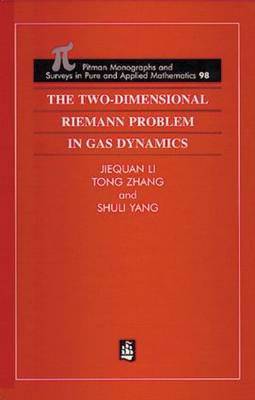
- Afhalen na 1 uur in een winkel met voorraad
- Gratis thuislevering in België vanaf € 30
- Ruim aanbod met 7 miljoen producten
- Afhalen na 1 uur in een winkel met voorraad
- Gratis thuislevering in België vanaf € 30
- Ruim aanbod met 7 miljoen producten
Omschrijving
The Riemann problem is the most fundamental problem in the entire field of non-linear hyperbolic conservation laws. Since first posed and solved in 1860, great progress has been achieved in the one-dimensional case. However, the two-dimensional case is substantially different. Although research interest in it has lasted more than a century, it has yielded almost no analytical demonstration. It remains a great challenge for mathematicians.
This volume presents work on the two-dimensional Riemann problem carried out over the last 20 years by a Chinese group. The authors explore four models: scalar conservation laws, compressible Euler equations, zero-pressure gas dynamics, and pressure-gradient equations. They use the method of generalized characteristic analysis plus numerical experiments to demonstrate the elementary field interaction patterns of shocks, rarefaction waves, and slip lines. They also discover a most interesting feature for zero-pressure gas dynamics: a new kind of elementary wave appearing in the interaction of slip lines-a weighted Dirac delta shock of the density function.
The Two-Dimensional Riemann Problem in Gas Dynamics establishes the rigorous mathematical theory of delta-shocks and Mach reflection-like patterns for zero-pressure gas dynamics, clarifies the boundaries of interaction of elementary waves, demonstrates the interesting spatial interaction of slip lines, and proposes a series of open problems. With applications ranging from engineering to astrophysics, and as the first book to examine the two-dimensional Riemann problem, this volume will prove fascinating to mathematicians and hold great interest for physicists and engineers.
Specificaties
Betrokkenen
- Auteur(s):
- Uitgeverij:
Inhoud
- Aantal bladzijden:
- 310
- Taal:
- Engels
- Reeks:
- Reeksnummer:
- nr. 98
Eigenschappen
- Productcode (EAN):
- 9780582244085
- Verschijningsdatum:
- 21/08/1998
- Uitvoering:
- Hardcover
- Formaat:
- Genaaid
- Afmetingen:
- 160 mm x 240 mm
- Gewicht:
- 580 g

Alleen bij Standaard Boekhandel
Beoordelingen
We publiceren alleen reviews die voldoen aan de voorwaarden voor reviews. Bekijk onze voorwaarden voor reviews.











